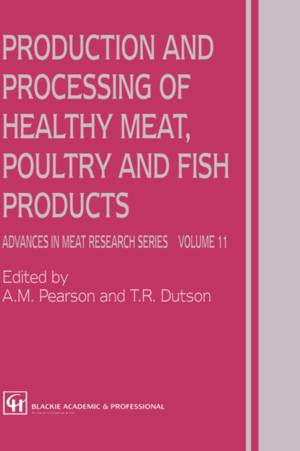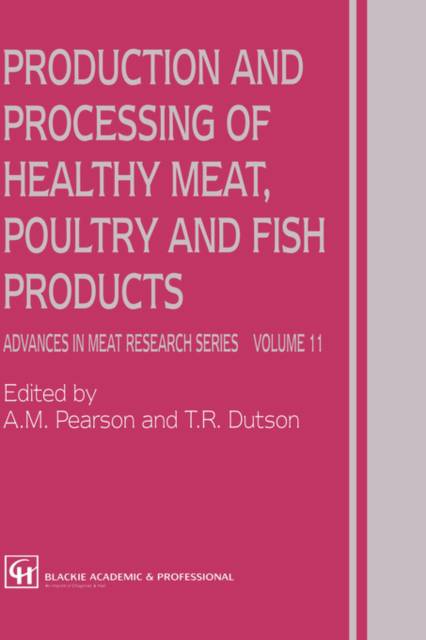
Je cadeautjes zeker op tijd in huis hebben voor de feestdagen? Kom langs in onze winkels en vind het perfecte geschenk!
- Afhalen na 1 uur in een winkel met voorraad
- Gratis thuislevering in België vanaf € 30
- Ruim aanbod met 7 miljoen producten
Je cadeautjes zeker op tijd in huis hebben voor de feestdagen? Kom langs in onze winkels en vind het perfecte geschenk!
- Afhalen na 1 uur in een winkel met voorraad
- Gratis thuislevering in België vanaf € 30
- Ruim aanbod met 7 miljoen producten
Zoeken
€ 259,45
+ 518 punten
Uitvoering
Omschrijving
The central theme for this volume was chosen since consumers have great interest in purchasing low fat, low salt and reduced cholesterol meat, poultry and fish products. As in past volumes, experts in the field have been chosen to write chapters with emphasis on their breadth of knowl- edge in each specific area. Efforts were also made to obtain authors from different countries in order to give the book a worldwide perspective. Chapter I stresses the nutritional and sensory properties that meat, poultry and fish products make to healthful diets and discusses consumer concerns about these products. Chapter 2 covers dietary recommendations in major consumer nations, along with data from food composition tables and the dietary contributions of meat, poultry and fish to meeting dietary needs. Chapter 3 discusses the labeling of low and reduced fat/salt prod- ucts which, although written mainly from the US viewpoint, may serve as a model for labeling in other countries. Chapter 4 reviews the rationale for reducing fat-energy levels in muscle foods, problems encountered in their production and how these may be solved. Chapter 5 discusses the scientific basis for reducing the salt (sodium) content in food products and the health benefits derived from lowering salt intake. Methods of reducing the cholesterol content of these animal products is reviewed in Chapter 6.
Specificaties
Betrokkenen
- Auteur(s):
- Uitgeverij:
Inhoud
- Aantal bladzijden:
- 367
- Taal:
- Engels
- Reeks:
- Reeksnummer:
- nr. 11
Eigenschappen
- Productcode (EAN):
- 9780751403909
- Verschijningsdatum:
- 31/07/1997
- Uitvoering:
- Hardcover
- Formaat:
- Genaaid
- Afmetingen:
- 156 mm x 234 mm
- Gewicht:
- 730 g

Alleen bij Standaard Boekhandel
+ 518 punten op je klantenkaart van Standaard Boekhandel
Beoordelingen
We publiceren alleen reviews die voldoen aan de voorwaarden voor reviews. Bekijk onze voorwaarden voor reviews.









